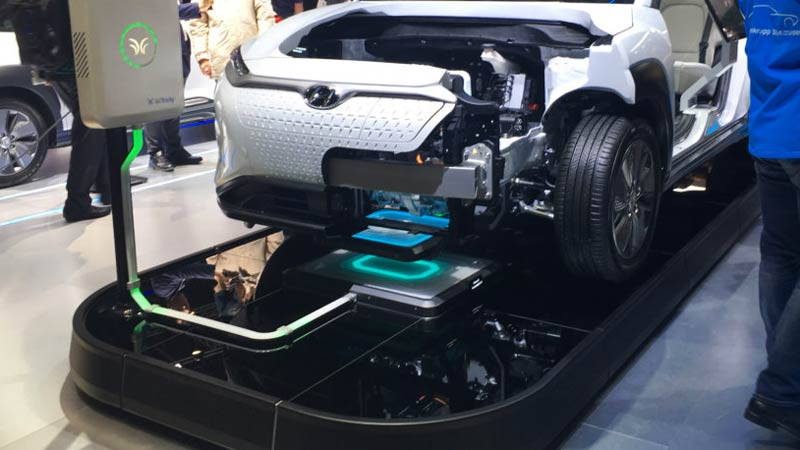Imagine pulling into a parking spot and having your electric vehicle (EV) charge automatically without plugging in a single cable. This futuristic scenario is becoming a reality in 2023, thanks to wireless EV charging technology. According to a recent report by Electrek, wireless charging is set to transform urban infrastructure by offering a seamless and efficient way to power electric vehicles. In this article, we will explore how this innovative technology works, its benefits, and how it is reshaping cities worldwide. You’ll also discover practical tips on how to take advantage of this groundbreaking advancement.
Understanding Wireless EV Charging: The Basics
How Wireless Charging Works
Wireless EV charging, also known as inductive charging, uses electromagnetic fields to transfer energy between a charging pad on the ground and a receiver on the vehicle. Here’s a simplified breakdown of the process:
- Charging Pad Installation: The charging pad is embedded into the ground, typically in parking lots or garages.
- Vehicle Alignment: The vehicle aligns with the pad, and the system automatically begins charging.
- Energy Transfer: An alternating current passes through the charging pad, creating a magnetic field. The receiver in the vehicle converts this back into electricity to charge the battery.
This technology not only eliminates the hassle of cables but also offers the convenience of automated charging, making it a game-changer for urban mobility.
Key Players and Developments
Several companies are at the forefront of wireless EV charging technology. Notably, BMW and Hyundai have launched pilot programs in various cities, while tech giants like Qualcomm are investing heavily in research and development. According to a report by Bloomberg Green, these initiatives are paving the way for widespread adoption, with predictions that the market could grow by 50% annually over the next five years.
The Impact of Wireless Charging on Urban Infrastructure
Enhancing Urban Mobility
Wireless EV charging promises to revolutionize urban transportation by:
- Reducing Traffic Congestion: With strategically placed charging pads, vehicles can charge while stopped at traffic lights or parked, minimizing the need for lengthy charging stops.
- Optimizing Space: By embedding charging infrastructure into existing roadways and parking spaces, cities can maximize land use without additional installations.
- Facilitating Autonomous Vehicles: Inductive charging is critical for the adoption of autonomous vehicles, enabling them to charge without human intervention, as highlighted by Wired.
Environmental and Economic Benefits
The shift to wireless EV charging supports sustainability goals by:
- Lowering Emissions: As more EVs hit the road, wireless charging helps to decrease reliance on fossil fuels.
- Reducing Infrastructure Costs: Cities can save on the cost of installing extensive charging stations, as noted by TechCrunch.
- Promoting Renewable Energy: Wireless systems can be integrated with solar panels and other renewable sources, offering a cleaner energy solution.
How to Embrace Wireless Charging
Tips for EV Owners
If you’re considering switching to an EV or upgrading your current vehicle, here’s how you can benefit from wireless charging:
- Research Compatible Models: Some of the latest EV models from brands like Tesla and Nissan are compatible with wireless charging. Be sure to check compatibility before purchasing.
- Locate Charging Spots: Use apps or websites that provide information on wireless charging locations in your city.
- Stay Informed on Updates: Follow industry news on platforms like InsideEVs to keep abreast of new developments and pilot programs.
Where to Find Wireless Charging
As of 2023, several major cities are pilot testing wireless charging infrastructure:
- Los Angeles, USA: A leader in EV adoption, LA has implemented wireless charging in select public parking lots.
- Oslo, Norway: Known for its sustainable initiatives, Oslo has integrated wireless charging in public transit areas.
- Shanghai, China: A pioneer in smart city technology, Shanghai is deploying wireless charging in residential complexes.
Conclusion: The Future of Urban Mobility
Wireless EV charging is not just a technological marvel; it’s a cornerstone of tomorrow’s urban landscape. As cities continue to embrace this innovation, we can expect reduced congestion, lower emissions, and a more efficient transportation network. For EV owners and city planners alike, the potential benefits are enormous. Are you ready to experience the convenience of wireless EV charging in your daily life?
As we look to the future, it’s clear that wireless charging will play a significant role in our transition to greener, smarter cities. Are you curious about how this technology will evolve? Share your thoughts and join the conversation about the future of urban mobility!

